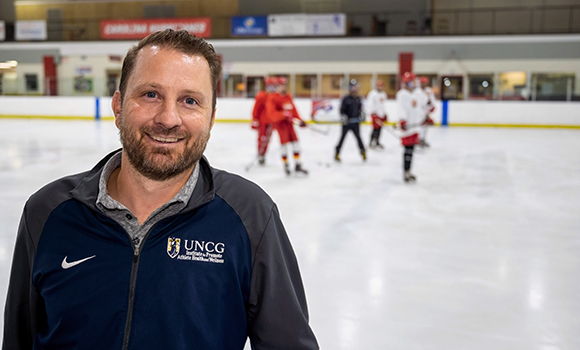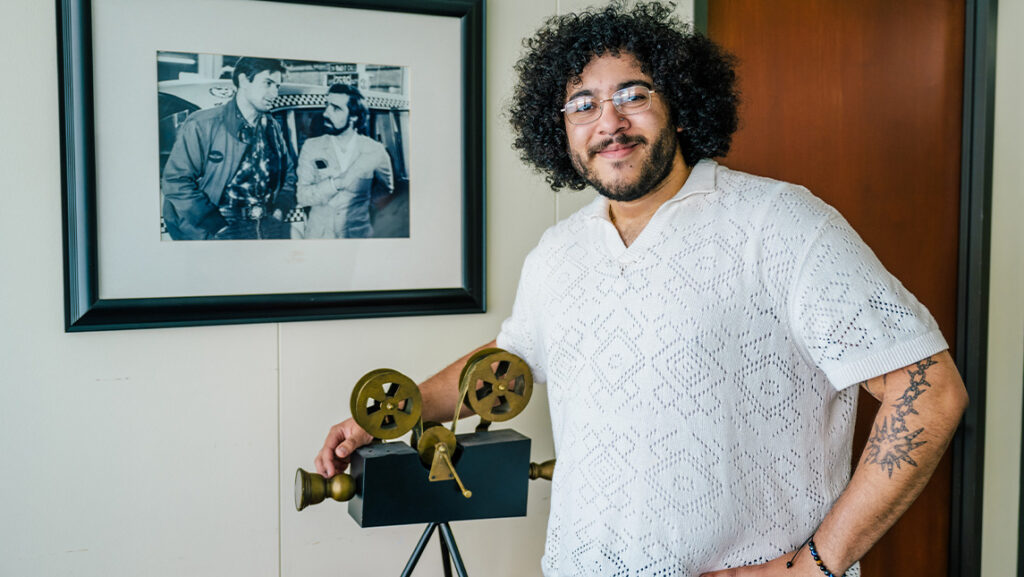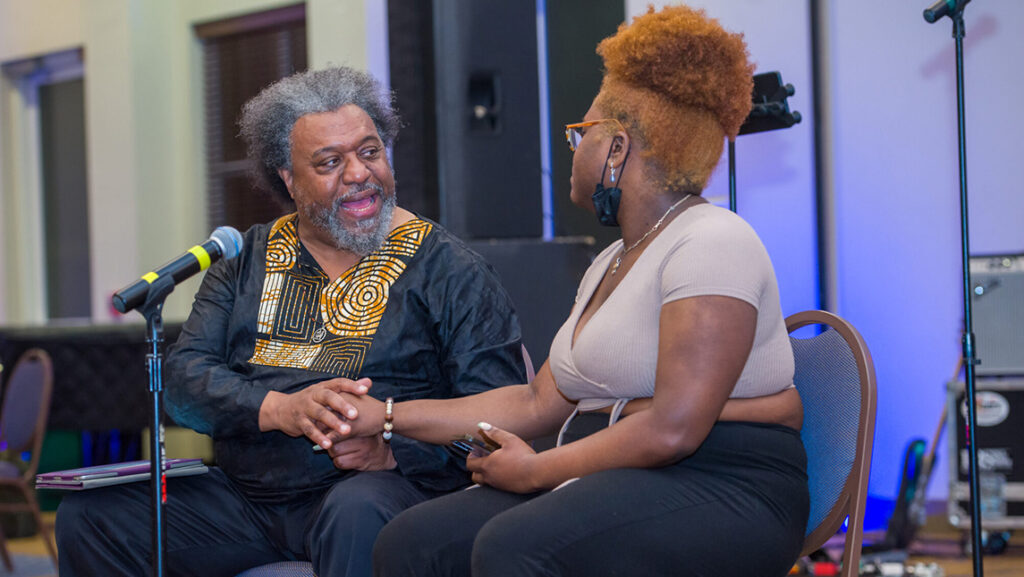Fall is finally here, which means our favorite fall sports are now in full swing.
Yet with fall sports comes the potential for increased injury among young athletes – specifically, sport-related concussions (SRC). Studies show that over 50% of SRCs go unreported, resulting in delayed care and long-term health impacts for athletes.
That’s where UNC Greensboro’s Dr. Jeff Milroy comes in. Milroy, an assistant professor in the Dept. of Public Health Education and associate director of the Institute to Promote Athlete Health and Wellness, has spent the last five years investigating concussion disclosure among young athletes.
Now, Milroy and his colleagues have been awarded a National Institute of Nursing Research (NINR) grant to investigate how the athlete-parent relationship affects disclosure. The research team, led by Milroy, includes Dr. David Wyrick (UNCG), Dr. Emily Kroshus (Washington State University), Dr. Bill Hansen (Prevention Strategies), and doctoral student Pauline Privitera (UNCG). NINR is part of the National Institutes of Health (NIH).
The new study builds off a 2016 study, funded by the NCAA and U.S. Department of Defense, in which Milroy and Wyrick explored the athlete-coach relationship.
“There’s not a whole lot of research out there right now that specifically looks at how parents impact disclosure behaviors of young athletes,” Milroy says. “There appears to be a lot of interventions popping up, but we don’t know how effective these interventions actually are and if they’re targeting the right things.”
The new study is called “APC,” which stands for “Athletes, Parents, and Coaches.” The first step is to dig into the following research question: What is the relationship between parents and concussion disclosure?
The second step is to create an intervention that targets all three groups – athletes, parents, and coaches – so that they can work together to encourage concussion disclosure among athletes, across a variety of sports, says Milroy.
In the past, Milroy’s team has created traditional online modules for collegiate student-athletes and coaches to teach them about the dangers of concussions and the importance of disclosure. For the newly funded study, the team has a different approach.
“With this new project, we’re trying to meet the needs of a younger population. They want their information quickly – it has to be short,” Milroy says. “We are developing a variety of digital media messages that they can get in 60-90 seconds.”
The researchers are partnering with Greensboro Parks and Recreation to work with youth athletes and their parents.
Using a collaborative approach, Milroy’s team will develop a variety of digital media messages and test them with athletes, parents, and coaches using focus groups and questionnaires.
“It’s critical that we work closely with those who the final intervention is intended for. In this case, that’s coaches, young athletes, and their parents.”
While the current study is focused on recreation leagues, the findings could have implications for high school sports and competitive travel leagues, like Amateur Athletic Union (AAU) basketball.
As athletes get older, Milroy says, “Parents may begin to place pressure on their child-athlete to play through injury in fear of missing the chance to be seen by college scouts. This can be risky, as playing through a concussion can have immediate and long-term negative consequences.”
Milroy’s hypothesis is that, across all sports and all types of leagues, the “rub dirt on it and move on” mentality of some parents can have a significant impact on the health and wellness of young athletes.
“Parents’ concussion attitudes may be really affecting their kids’ concussion attitudes,” Milroy says. “Ultimately, our research is about getting athletes to disclose those symptoms as soon as they experience them so that they can receive the medical attention they need.”
Story by Alyssa Bedrosian, University Communications
Photography by Martin W. Kane, University Communications



